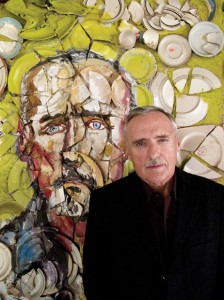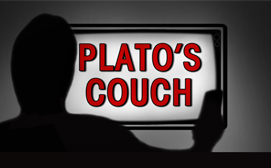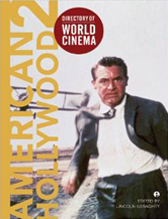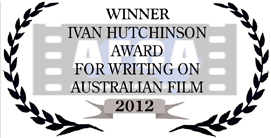
REVIEW: Dennis Hopper and the New Hollywood
Reflecting on a now distant life of booze and drugs, Dennis Hopper remarked in 2009 that, “I should have been dead ten times over. I’ve thought about that a lot. I believe in miracles. It’s an absolute miracle that I’m still around.” Miracle or not, it’s perhaps no surprise that Hopper, the one-time bad-boy of Hollywood is now regarded as an elder statesman of the American film industry. While he’s best known for an acting career that now spans five decades, Hopper’s artistic endeavours have at one time or another extended to writing and direction (most famously in Easy Rider (1969)), painting, photography, and sculpture.
It is Hopper’s eclectic involvement within America’s art movements over the past half-century that serve as the focus for ACMI’s current exhibition, Dennis Hopper and the New Hollywood. Charting an historical course through a post-1960s artistic landscape, the exhibit draws on Hopper’s various filmmaking experiences in conjunction with his contributions to painting and his thoughts on art, illustrated through his expansive private collection of works.
As a figure worthy of such a showcase, Hopper has an impressive list of credentials. He’s acted opposite some of the all-time greats (James Dean, Marlon Brando, Paul Newman), worked with directors such as Francis Ford Coppola (Apocalypse Now), Sam Peckinpah and David Lynch (Blue Velvet), and counts Andy Warhol, Jasper Johns and Roy Lichtenstein amongst his art contemporaries. Where many of his colleagues have passed away though or simply into obscurity, Hopper remains a survivor.
This historical significance of Hopper’s career is immediately evident in a video installation entitled “I remember” that graces the entrance to the exhibition, in which the star recounts the various events that have influenced his life from the nuclear tests in the Nevada desert and the war in Vietnam, to the Rodney King-inspired L.A. riots, 9/11 and the election of Barack Obama.
In the context of art though, part of Hopper’s broad appeal stems from the manner in which he has embraced (and been embraced by) both popular culture and the avant-garde during this time. It’s not surprising then that the exhibit initially captures Hopper in a series of photographs that emphasise his rebellious streak. Amongst others, a shot of the bed-ridden and bleary-eyed star, his pallid face a picture of inebriated stagnation, a glass of wine still gripped in one hand, personifies the anti-heroic characterisations for which he was initially renowned.
But as the other sections of the exhibition demonstrate, Hopper’s talents ran much deeper than the drunken cowboy persona of his early years. A wall of his black and white photographs taken mainly during the 1960s of subjects ranging from the celebrity (Jane Fonda, Bill Cosby) to the street-dweller is a real highlight. He brings an immediacy to his photography, a sense of the improvised that mirrors his early approach to acting.
Of all Hopper’s other personal contributions to the exhibit only his more recent larger scale oil paintings (reproductions of some of his earlier photographs), are a disappointment. It could be that Hopper is attempting to reflect on the ‘billboardification’ of his hometown Los Angeles with these works, and yet apart from their size there’s little evidence of a consumerist critique that one finds in the work of Warhol.
And yet while Hopper’s art clearly dominates the space, the curators have been careful to not to let the exhibition become a self-indulgent showcase of the celebrity artist. Going well beyond the man and his movies, Dennis Hopper and the New Hollywood opens a window to a movement of artistic expression that emerged in the 1960s and which has been carried forward by figures such as Hopper.
Amongst various others, works by Jean-Michel Basquiat, Julian Schnabel, Marcel Duchamp, Jenny Holzer, Robert Mapplethorpe and Ed Ruscha offer valuable contributions to the exhibition. It’s also fitting that one of the final paintings on show is a comic book-styled artwork by Roy Lichtenstein, entitled “Mad Scientist”. Madness is an image with which Dennis Hopper has long been associated, but as this presentation shows, there’s clearly some method there as well.
Dennis Hopper and the New Hollywood runs until Sunday April 25th 2010 at ACMI in Melbourne.
For further details visit:
http://www.acmi.net.au/hopper_new_hollywood.aspx
One Response to “REVIEW: Dennis Hopper and the New Hollywood”
RSS feed for comments on this post. TrackBack URI






Great site and nice text.